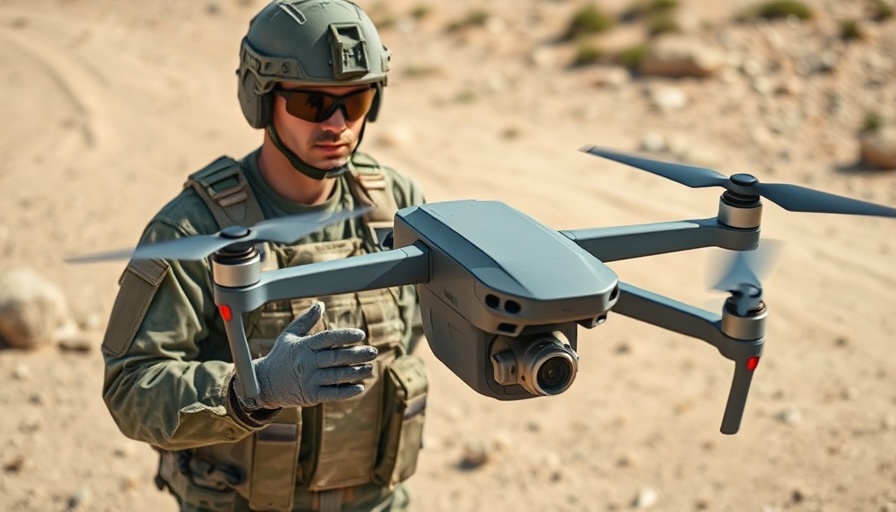
Understanding the Rise of Drone Warfare
As the landscape of modern warfare evolves, drone technology has become a critical asset for the military. The introduction of unmanned systems heralds a transformative era for conflict engagement, with paratroopers at the forefront of this shift. The recent triumph of the 173rd Airborne Brigade—achieving the Army's first drone-to-drone kill—highlights the military's commitment to integrating advanced technology in combat. This moment not only marks a significant milestone but also exemplifies the Army's broader strategy of adapting its forces to meet future challenges.
Emerging Technologies: The Practical Approach to Drone Integration
In an innovative approach, soldiers are combining cutting-edge technologies and conventional military training. The 173rd's Bayonet Innovation Team has spearheaded efforts in drone experimentation, which includes building and modifying drones from 3D-printed parts. This approach brings together technical expertise and real-time tactical understanding. The practice isn't just a case of trial and error; it embodies a process where initiatives evolve based on swift feedback from multiple units and commanders.
The Importance of Real-Time Feedback in Combat Readiness
Feedback loops are crucial in the realm of drone warfare. According to 1st Lt. Francesco La Torre, the environment surrounding these innovations is characterized by accessibility and openness, rapidly passing lessons learned from one engagement to another. This level of interconnectedness allows the Army to adapt its strategies quickly, a necessity in the fast-paced world of drone technology. By implementing feedback mechanisms between programs and across fronts, the military is becoming increasingly adept at responding to diverse combat scenarios.
AI Enhancements: Faster Decision-Making and Target Recognition
The integration of artificial intelligence has further amplified the Army's capabilities. Utilizing platforms like Palantir's Gotham and Maven, units can make faster decisions during critical operations. For example, the 173rd utilized AI to enhance a long-range reconnaissance drone’s ability to identify targets quickly and accurately. This advancement not only streamlines military response times but also minimizes the risks associated with traditional reconnaissance methods.
Future Predictions: The Shift Toward an Autonomous Warfare Landscape
As military operations continue to embrace advanced technologies, the future of warfare could see increased reliance on autonomous systems. If current trends persist, we could expect further integration of AI and drones across the Army and other branches of the military. Understanding these trends is not just crucial for strategic planning; it is paramount for entrepreneurs and businesses involved in developing these technologies, ensuring that they remain ahead in the rapidly evolving market of defense technologies.
Impact on Global and Business Trends: What This Means for New Ventures
The transformation within the military also resonates within the broader business landscape. Companies that align their strategies with emerging technologies, such as drone manufacturing or AI development, stand to benefit significantly. This shift implies a new wave of business growth strategies as firms adapt to supply defense contracts and engage in militarily relevant innovations. As we observe these changes in military practices, parallel trends can arise in sectors like manufacturing, tech startups, and AI-enhanced services.
A Call to Action for Entrepreneurs and Businesses
Understanding the dynamics of military innovation provides valuable insights for businesses. Entrepreneurs interested in fields of defense tech, AI, or even small business strategies can find lucrative opportunities within these changes. Pay attention to market trends as we move into 2025; they will reveal areas ripe for development and investment. Leverage the momentum created by the military's transition to drone warfare—as it will undoubtedly inspire innovations across multiple sectors.
 Add Row
Add Row  Add
Add 




Write A Comment